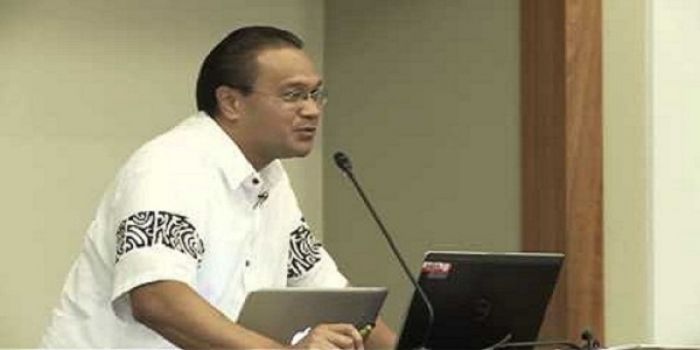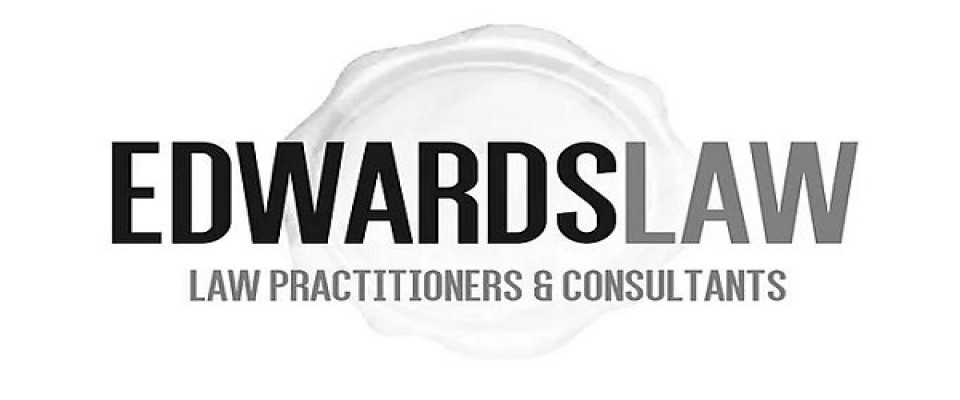The Demigod Maui: Modern Day Lessons from Ancient Tales of Oceania Featured
 Associate Professor Maui-Tava-He-Ako Dr Tevita 'O. Kaili
Associate Professor Maui-Tava-He-Ako Dr Tevita 'O. Kaili
FONUA MOE TALA/CULTURE AND LANGUAGE
The Demigod Maui: Modern Day Lessons from Ancient Tales of Oceania
By Associate Professor Maui-Tava-He-Ako Dr Tevita 'O. Kaili
Associate Professor & Chair, International Cultural Studies & World Languages
Brigham Young University, Hawaiʻi
A couple of weeks ago, my wife comes to me with one of her animated expressions of annoyance. The Disney trailer for Moana had just been released and she was not happy with their version of Maui. Of course I jumped on the Internet and start surfing (a sport invented by Maui, by the way). And the controversy was there, as I imagined it would be.
As a sociocultural anthropologist who studies Maui and his configuration of tā (time) and vā (space), I was particularly interested in this depiction by Disney and the ongoing debates, in national and international media, about Mauiʼs body size, facial features, and his portrayal by Oceanians and non-Oceanians.
Moreover, I was concerned about Mauiʼs claim, in the Disney trailer, that he was “the greatest demigod in all of the Pacific Islands.” A highly controversial statement that angered some of my brothers and sisters from other parts of Oceania. At the end of my reading, it became clear; Maui did not seem to resonate with some of the members of my community.
Itʼs important to note here that in addition to the trailer which showed this demigod boasting of snaring the sun, fishing up islands, and slaying ferocious monsters, Maui also seized fire from its monopoly by the gods. He surfed and battled monsters simultaneously. Oral histories point to Maui as the one who invented surfing. Maui also originated tattooing and created the first dog in some of the traditions. He was an accomplished agriculturist.
In my homeland of Tonga, he was the first person to plant and harvest sweet potatoes, taros, breadfruits, and yams. As a farmer, he was also skilled in cooking his food in an ʻumu, an underground oven. Itʼs likely that he was the inventor of the ʻumu technology in Oceania. Maui used his trickery to outsmart his oppressors. Hence, the nickname, “Maui, the trickster”. Finally, Maui was a great leader, a liberator and freedom fighter.
Maybe as the trailer suggested, he was a braggart, a show off, an obese demigod that behaves more like Disneyʼs Goofy than Hercules. We donʼt know. What we do know is that he always fought for the underdog and liberated the oppressed.
Critiquing these physical stereotypes is an important discussion to have around the issue of representations. But in doing so, it’s easy to overlook one of the grand messages of Maui’s stories, which is, to advocate for justice by transforming society.
Mauiʼs feats are actually heliaki, beautiful poetic expressions, of resisting oppression and fighting injustice for the benefit of humanity (see ʻOkusitino Mahina’s PhD thesis, 1992).
As a devout student of Moana (Oceanic) oral traditions, a voracious reader of Maui stories, and a direct descendant of Maui who feasted upon the tales of Maui from a young age, there are lessons we can and must learn from Mauiʼs legacy.
Let me explain: In Moana traditions, Maui was the youngest child, the one with the least status. He had older brothers who took pride in taking advantage of him, particularly making fun of his skill as a fisherman. However, despite his status as the youngest, Maui acquired the most potent mana, or supernatural power, from his ancestors.
His position gave him insights to sibling rivalries, power relations, and the unfairness of certain cultural rules, particularly the automatic granting of prestige and wealth to the people who did not work for and often abused their power. The dualistic tension between older siblings and younger siblings, between the powered and the less powered, is a central motif in the Maui saga.
In Moana culture, the sun is a symbol for paramount chiefs. The legendary act of snaring and slowing down the sun to give Mauiʼs mother, Hina, time to make tapa cloths and Mauiʼs relatives time to plant and fish, points to Maui freeing society from its oppressive rulers.
These rulers oppressed people by giving them little time to complete demanding tasks. The impressive feat of lifting up the sky so that humans could stop crawling and start walking upright denotes Maui liberating the masses from the taxing burdens of the oppressive class. In a similar fashion, the epic task of fishing up islands signifies Maui searching and locating islands for those without lands, exiles, and refugees.
Fire, another Oceanic symbol, signifies knowledge and technology. Maui seized fire from the hording hands of the gods and shared it with the rest of humanity. In this way, Maui democratized knowledge and shared technology freely with the world. It can be seen as an ancient version of open-source. Maui was the champion of the underclass, the dispossessed, and the marginalized.
Finally, the courageous deed of slaying man-eating monsters symbolizes Maui dismantling monstrous institutions of domination that were devouring humanity. In all the accounts of Maui, he refused to accept his marginalized lot in society. He resisted and fought against all forms of injustices, from ageism to xenophobia. Through his wisdom as a grand-master trickster of Oceania, he transformed society from inequality to equality.
Maui is the leader and culture hero who is the embodiment of fairness, justice, and equity. His power is said to emanate from the goddess Hina, who is often described in mythologies as Mauiʼs grandmother, mother, wife, or sister. The feminine is the true source of Mauiʼs mana, the power that he exercised in transforming the impossibility to the possibility.
The specificity of Mauiʼs tale is unique to Oceania, but the generality of his legend is universal to all societies. We find the ethos of Maui in Martin Luther King Jr, Mother Teresa, Mahatma Gandhi, Nelson Mandela, Jean-Marie Tjibaou, Darlene Keju, Queen Kapiʻolani, High Chief Tupua Tamasese Lealofi III, Queen Salote Tupou III, Queen Liliʻuokalani, Cesar E. Chavez, Harvey Milk, and Rosa Parks.
And today we see advocates such as the late Elie Weisel, Malala Yousafzai, Benny Wenda, and Liu Xiaobo. Like Maui and other culture heroes/heroines, it takes more than just one person to accomplish the daunting task of transforming society. Maui depended upon the goddess Hina for power, guidance, and support. We, like Maui, must look to our ancestors for guidance and our allies for support and solidarity.
The systems of domination, such as racism, exploitation of the poor, hate crimes, brutalizing of women and men of color, and retaliatory violence, all of which are oppressive forces in our society, call for the rise of a new Maui.
I extend the invitation to all readers. Learn these lessons and recognize our capacity to rise above our biases and violence, use ingenuity and education to make changes that last for generations to come, share knowledge and conquer our inner monsters that hinder us from thriving as a global world.
I believe that we will find a certain truth that lies within us. Which is, that we are all Maui.
5 comments
-

SI'OTO 'OFA: Fakatulou atu Maui-Tāvā-He-Akó, (DR. Tēvita O. Kaʻili), and Hufanga (DR. Māhina)...Excellent commentaries on our notorious Demigod Maui and the Disney depiction of one of our Polynesian legendary lores.
Since Polynesians shared a common thread to Maui - the bad boy of the gods and goddesses realms - isn't it true that various versions are alive in each Island Nation? Practically legendary tales that threaded its life through the ages with creative minds of the times?
I am, therefore, wondering when will someone exploits these tales as literary creations like Harry Potter, for example? Since these Maui tales were fabricated out of pure imaginations, why not keep it going with modern graphic literary tales in the Polynesian traditions. But let's not try and limit its boundaries; Maui's craftiness is what made him popular.
And since it will be literary fiction, why not take liberty and expanding the Maui legend to underground worlds and into space? Maui was daring, and always defying nature to satisfy the Polynesian mind on freeing themselves of the confines of their limited and enslaving conditions. Weren't his tales anti-religious and always defying the confines of traditions, cultures, and religion? If Maui was a servant of the Gods he would be a boring character.
No wonder the White Man (Papālangi) arrived with their tools, and the Polynesians wasted no time adapting and stealing them to become Mauis themselves: to defy the powers of nature, and free themselves from their bondage under their overbearing and powerful chiefs. -

Thank you for the sensible critique. Me and my neighbor were just preparing to do some research on this. We got a grab a book from our area library but I think I learned more clear from this post. I'm very glad to see such great information being shared freely out there.
-

Aloha & Si'oto'ofa Maui-Tava-He-Ako:
(Malo fau 'ae tau mo hono fuesia 'ae ngaahi fatongia mo ha'amoa 'ae ngaahi ngafa mei Vaihiloa moe fonua tupu'a 'oe kau Maui).
Your tavaist realist analysis of the Disney trailer for Moana problematically featuring Maui as a Moana / Oceanic (and Tongan) hero is equally, originally groundbreaking as a powerful form of art and literary criticism in general, with a specific bearing on both the material art of film-making (tufunga hele'uhila) and performance art of film-acting (faiva hele'uhila).
Your excellent use of the ancient Tongan concept and practice heliaki as an artistic and literary device for the mediation of intersecting or connecting and separating human meanings in Tongan formal language through sustained symmetry (tatau) and harmony (potupotutatau) to produce beauty (malie / faka'ofo'ofa) is spot on.
The use of helikai is most evident in the performance art of poetry (faiva ta'anga / faiva maau), material and performance arts of oratory (tufunga lea moe faiva lea) and performance art of mythology (faiva talatupu'a).
In Tongan formal language, as in poetry, oratory and mythology, human meanings are metaphorically wrapped up in symbols, functioning merely as "pointers" to actual things in reality, as in nature. mind and society. In short, heliaki involves "symbolically saying" one thing but "really meaning" another, as in the many in-depth and excitingly revealing examples you analysed with brilliance in the text.
'Ofa ke kei fakaivia koe 'ehe laumalie fakaMaui he ngaahi fekumi 'oku faimateaki mo faimatekina he mala'e 'oe 'aati moe ako, 'o fakafenapasi 'ae talatukungutu moe talatukutohi koe to'ongapo mei ono'aho (kuohili / kuongamu'a) ma'a onopo (lotolotonga / kuongaloto moe kaha'u / kuongamui) 'aia 'e hoko koe koloa moe tukutukulaumea ma'ae holoito'utangata he vaa'ikuonga he ta moe va.
'Ofa atu fau moe manatu ma'u,
Hufanga -

Dear Hūfanga,
Thank you so much for your comment on my article. My realism interpretation of Maui is based on your groundbreaking PhD thesis and tā-vā theory of reality.
ʻOfa atu fau mei he fonua ʻo Mauí
Maui-Tāvā-He-Akó, Tēvita O. Kaʻili -

Malo fau and many thanks Maui-Tava-He-Ako for the brave effort and great insight in purposely taking a total, reality-based, approach to the totality of all the everlasting and extraordinary deeds and exploits of Maui (as opposed to a partial, bias-led, approach to a partiality of his overly, beautifully rich and diverse activities) -- in all its multi-faceted dimensions, expressions and manifestations -- mainly functioning as an excellent theoretical-practical and cultural-ethnographic critique of the Disney trailer of Moana -- where Maui as a Moana (Oceanic) hero and his many heroic activities are duly, highly problematised in the event -- informed by the so-called "politics of representation" specifically and "politics of tradition" generally.
Now that Maui has been the subject matter of investigation under the creative process of both tufunga hele'uhila or material art of film-making and faiva hele'uhila or performance art of film-acting -- involving the mediation of intersecting or connecting and separating human meanings (as expressed in the many stories of Maui) and intersecting or connecting and separating ata or images by means of mama or light and lanu or colours (expressed by means of representation or expression) -- I am sure playwrights (hopefully some will be from the Great Moana Nui) will soon take them beyond their verbal artistic and literary forms as grand myths and legends now to theatres -- which are merely means where the same subject matters are investigated as either faiva fakaoli, that is, performance art of comedy (involving the mediation of ngalipoto or normality and ngalivale or absurdity, resulting in kata or laughter) or faiva fakamamahi, that is, performance art of tragedy (concerning the mediation of anga'itangata or sociality and anga'imanu or animality, resulting in fakama or shame) or both.
Let's hope that the film-makers and film-actors, like the playwrights, both comedians and tragedians alike, take their arts and crafts seriously by taking cultures and languages seriously -- especially the refined 'ilo or knowledge and poto or skills critically acquired through ako or education as an intellectual and practical process which are historically composed or constituted in fonua-kalatua or culture as a social receptacle and dialectically transmitted or communicated in tala-lea or language as a human vehicle in ta or time and va or space. The academic but prophetic words of wisdom from Maui-Tava-He-Ako is all worth taking heed of seriously!
'Ofa lahi moe hufaki,
Hufanga



